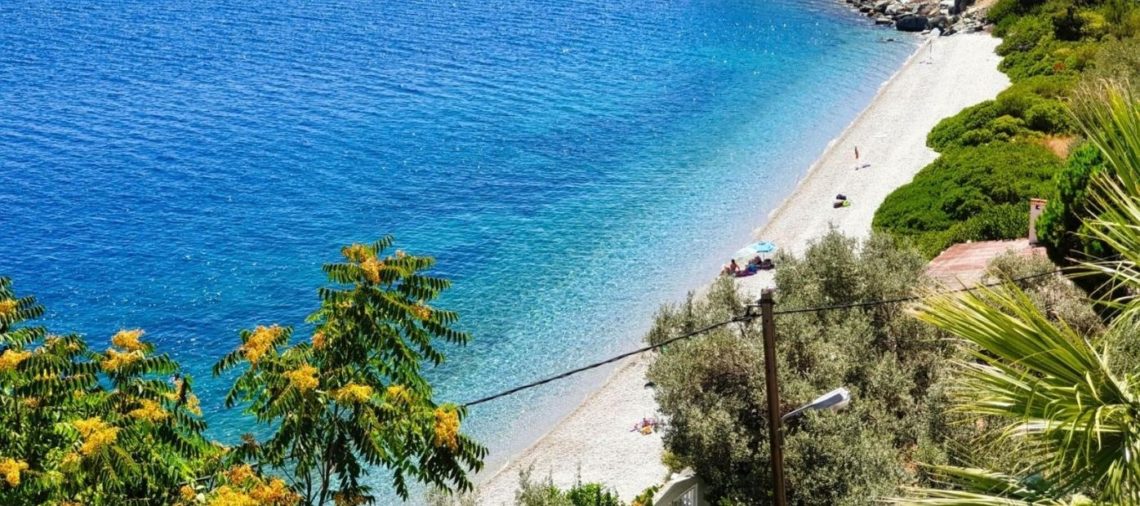I decided to spend a holiday on the island of Evia after thinking and changing my mind a thousand times. Greece’s second largest island (after Crete), Evia is quite popular with the Romanians, who visit it more and more often, but it doesn’t get the publicity of Cyclades, and other archipelago sisters do. It runs parallel to the east coast of the country, from just off the Pelion peninsula to the south, towards Attica, in a sort of perfect geographical concealment. I eventually chose Evia because I had read interesting things about it and because I wanted a holiday by car somewhere different from the classics Thassos or Halkidiki. Besides, I had heard that the prices in Evia were very good, which was to be confirmed. What’s more, it seems that after the pandemic, the price level has somehow remained the same, which will undoubtedly increase the demand for Evia holidays.
It resulted in a nice week, in which I tried to discover as much as possible of what this island has to offer, to see the main sights of Evia, the beaches of Evia, and the reasons why Greeks so love this place.
Do you plan a holiday in Evia? Here are the best hotels in Evia!
- About Evia, the island of a thousand names
- How to get to Evia
- Tourist attractions in Evia. What to do and see in Evia
- Map with the main tourist attractions in Evia (zoom for details)
- Edipsos hot springs
- Ilia
- Drimona waterfall
- St David’s Monastery
- Drakospita – Houses of Dragons
- Dimosari Gorge
- Lichadonisia Islands
- Chalkida
- Kafireas / Cavo d’Oro
- Church of St John the Russian
- Limni
- Eretria
- Karysthos
- Marmari
- Best beaches in Evia
- Agia Anna Beach
- Rovies Beach
- Chiliadou Beach
- Thapsa Beach
- Pefki Beach
- Kalamos Beach
- Agiocampos Beach
- Limnionas Beach
- Gregolimano Beach
- Evia’s Gastronomy
- Pin it!
About Evia, the island of a thousand names
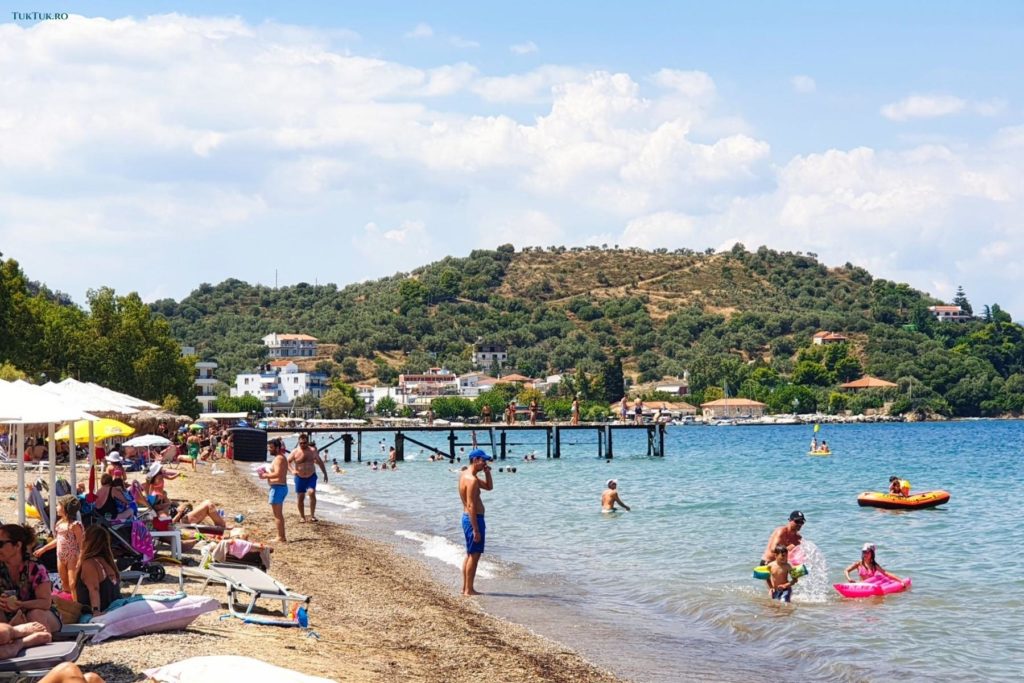
The drive to Evia by car was relatively smooth, mainly because I opted for an intermediate night in southern Bulgaria. In Evia, I stayed in the northwest of the island, somewhere between Edipsos and Limni, near Ilia beach). Basically, a 1000 km distance from Bucharest, which includes a short ferry crossing from Glifa. I, therefore, wandered mostly through the northern part of Evia, but on a day trip to Athens, I had the opportunity to see the rest of it.
Evia is a huge island – it’s 175 km long (and 50 km wide at its widest point). You’ll quickly learn that it’s also called Euboea or Negroponte. Throughout history, it has also been called Dolicche and Macris (after the long form), Aonia, Ellopia and Abantis (after the names of the tribes that lived here), Chalcis, and Euripios (names given by the Byzantines). Euboea is a name derived from the combination of two terms and roughly translates as ‘the land where cattle are well fed’. This is because of the well-forested mountains that surround the island, and where, unfortunately, every year, we learn that vegetation fires break out.
The famous poet Homer is said to have lived on Evia for a period of his life, and the island is said to have been the home of the famous titans who fought for supremacy, Cyrus, one of whom, the son of Uranus and Gaia, is considered the island’s patron. Also, according to some legends, the goddess Hera may have been born on Mount Ohi in Evia, but this is rarely mentioned.
Getting down to reality. Evia has been inhabited since prehistoric times, the most important settlement since its inception being the Chalkida capital of today. It was the closest to the mainland (Chalkida, or Chalkis, is the site of a bridge linking to mainland Greece across the Evripos Strait) and had natural resources of copper, for which it later became a major trading center.
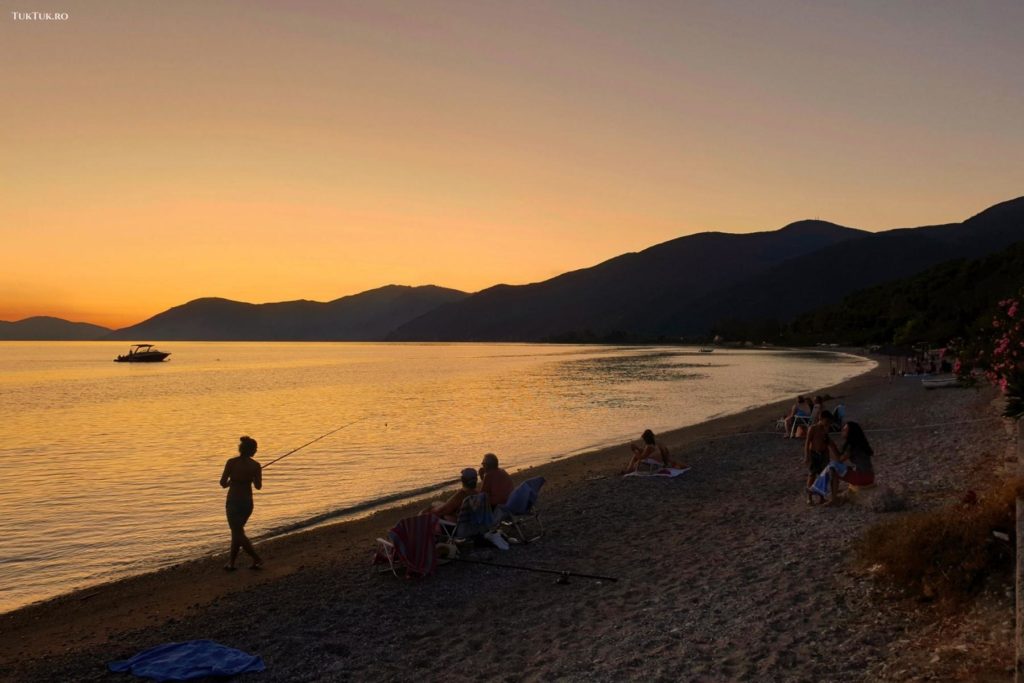
The city-states of Chalkida and Eretria flourished and then ended up, like many others, as easy prey for Roman expansionists. In the 5th century, Evia rebelled against the Athenians, so Pericles ordered the destruction of the long walls protecting the plain of Histiaea, replacing the population there with Athenian settlers in military service. Speaking of Histiaea, we learned that the largest open-air ancient theatre ever discovered in Greece lies buried here beneath the earth that has covered it for centuries!
During the Macedonian Wars, Chalkida, Eretria, and Oria were completely destroyed by the Romans, who retained control of Evia until it was taken over by Byzantine Constantinople (4th century). Six centuries later, Evia was taken over by three Lombard nobles, who renamed it the Kingdom of Negroponte and turned it into an important and well-organized commercial center.
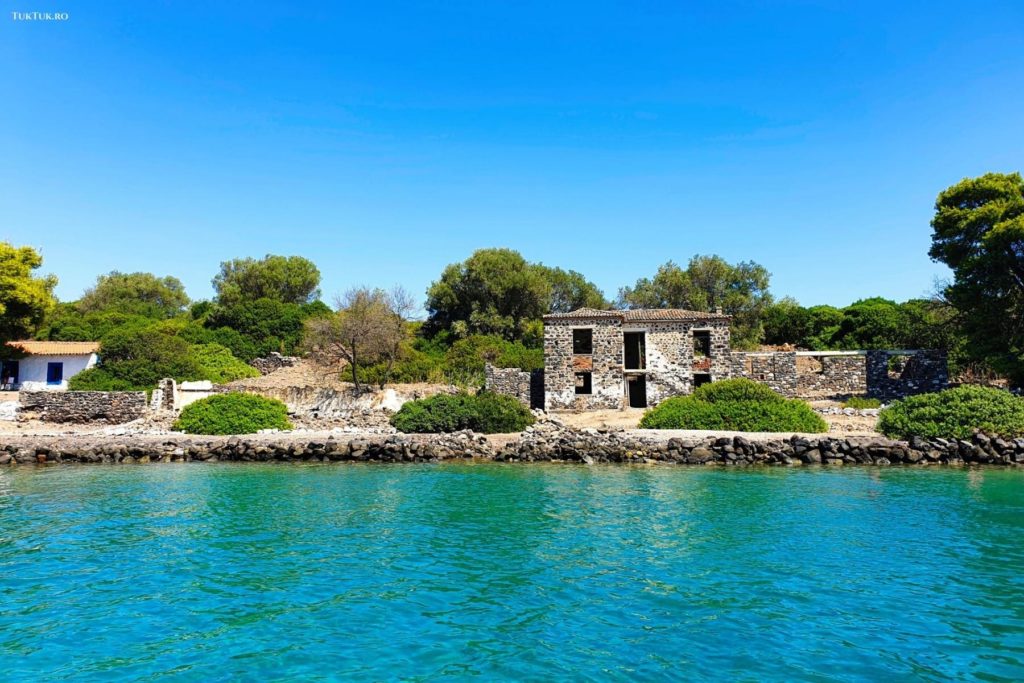
Only… the Ottomans followed, and Evia entered the troubled waters of history. Located in the middle of the Ottoman Empire, and therefore a point of strategic importance, the island experienced many hardships, with the population suffering greatly at the hands of the Turks. Chalkida became a Turkish stronghold, and although southern Greece was liberated in 1828, Evia was not officially ceded until 13 June 1830, when it began to develop again. A difficult time for the island was in World War II, when the Germans bombed it from all positions, but the resistance of the locals was incredible.
The presence of the Chalkida bridge, which connected to Athens, was also very important. If you are on holiday in Evia and want to get to Athens (as I did), you will inevitably cross this bridge – in fact, the new one. Because there’s still the old, metal bridge, which can be opened to allow ships to pass, but which at some point had become too small for the traffic across the straits and was replaced by the particularly beautiful 695-meter-long High Bridge, completed in 1993.
How to get to Evia
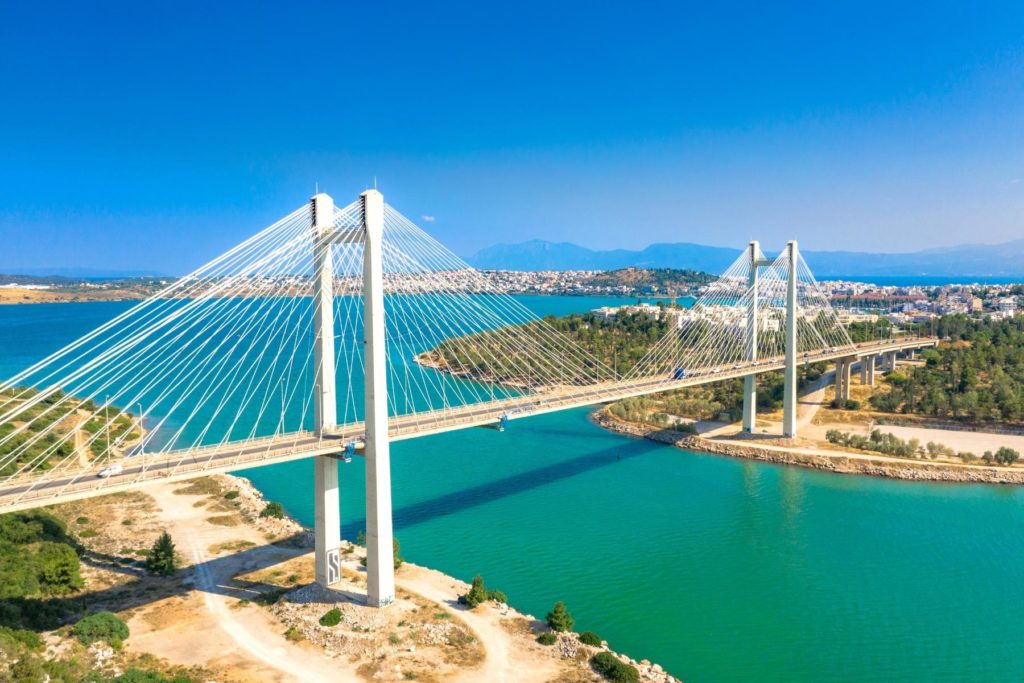
And one more thing about how to get to Evia: if you come from Romania by car, the best way is to take the ferry from Glifa. But it also depends a lot on where you are staying in Evia because if you are staying in the middle or southern part of the island, you can continue very well on the mainland and then enter the bridge I mentioned above, which brings you immediately to the capital of Chalkida. You can cross the same bridge if you choose another option: fly to Athens, then rent a car and drive to Evia. The distance between Athens and Chalkida is 75 km (about an hour). But don’t let the short time “steal” you away because once you’ve entered the island, depending on where in Evia you need to go, you’ll travel a possibly longer distance. And that’s because, as I said, the island is very large and has no motorways. And no airport.
Tourist attractions in Evia. What to do and see in Evia
Being such a big island, Evia could be divided, from a tourist point of view, into three: the north, the central part, and the south. The distances are great, and it’s practically impossible to see everything in a week because that would mean doing nothing but sitting in a car and driving around. This means that if you were enchanted by it on your first visit, you should come to Evia a second time to delve deeper into this island where many Greeks from Athens holiday or spend their weekends.
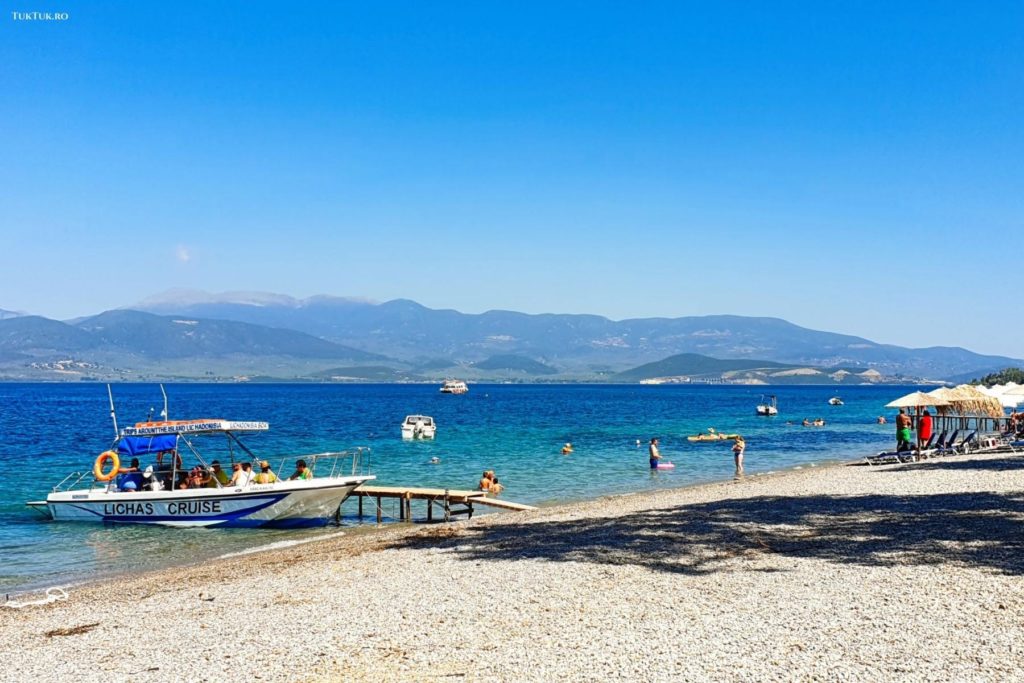
The north is covered in fragrant pine forests; you’ll discover ancient monasteries (such as Galataki and St David’s), the village of Limni, the Drimona waterfall, and the hot springs of Edipsos. The world of Mount Dirfis dominates the center of the island. Beautiful beaches cover the northeast, joined by the medieval towers of Messapia and the Byzantine churches of Avlonas. In the south, the island is caressed by stronger winds, perfectly ‘matched’ by the houses of the dragons – Drakospita, the Ochi Mountains, and the enchanting Dimosari keys, the medieval castles of Aliveri, Stira, and Karystos. But let’s take them one by one.
Map with the main tourist attractions in Evia (zoom for details)
Edipsos hot springs
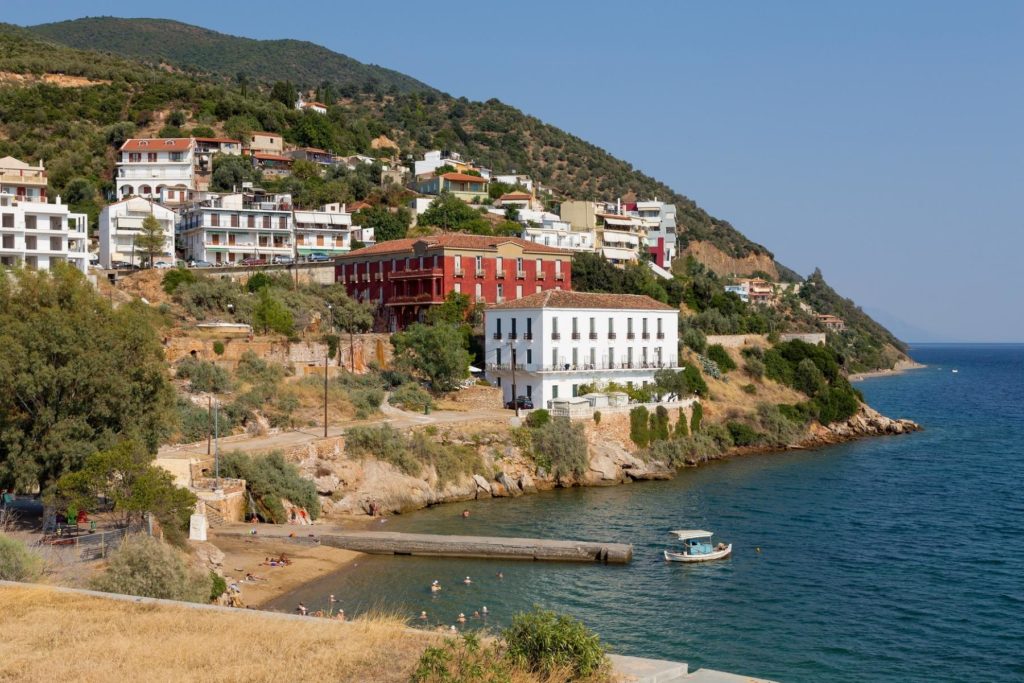
Edipsos is arguably the most popular spa town in Greece. The thermal springs of Edipsos have been attracting visitors for centuries. Emperors such as Hadrian, Marcus Aurelius, and Constantine the Great came to this small town on the northern island of Evia to treat various ailments with the help of the thermal waters here. Aristotle himself tried to unlock the secret of the therapeutic powers of the mineral-rich waters of Oedipus. Later, personalities such as Aristotle Onassis, Maria Callas, Winston Churchill, Omar Sharif, and Greta Garbo enjoyed the benefits of the springs. There is also an old myth that the goddess Athena asked her brother Hephaestus to create the Oedipus springs so that Hercules, her favorite hero, could rest here after each of his tasks.
In Edipsos, there are over 60 springs ranging in temperature from 34 to 71 degrees, all extremely rich in minerals and trace elements. The thermal waters rise among the rocks from a depth of 3000 meters, and in the several spas in the town, you can treat ailments such as back and neck pain, joint problems, rheumatism, gynecological and circulatory problems, etc.
Ilia
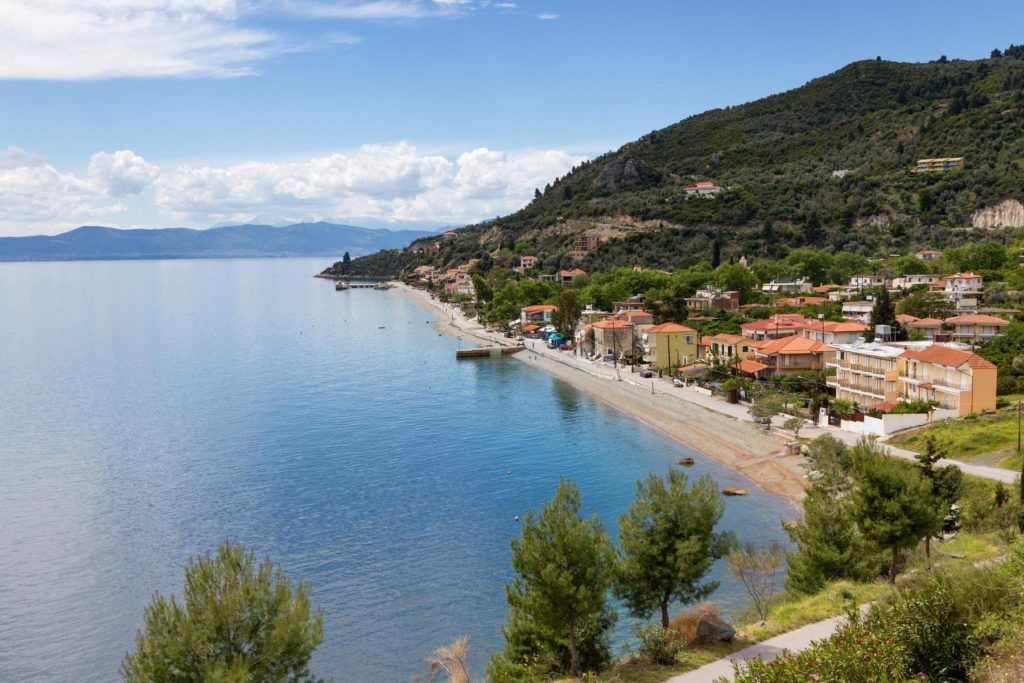
I included Ilia on the list of places to see in Evia because the hotel I stayed in is right near this small town in northern Evia. Basically, Ilia is a traditional fishing village that hasn’t changed much over the years and has a long (but narrow, pebbly) beach bordered by numerous tavernas where the food is very good especially fish and seafood dishes. Ilia may be an option for accommodation in Evia, especially as there are some very affordable hotels and guesthouses here.
Drimona waterfall
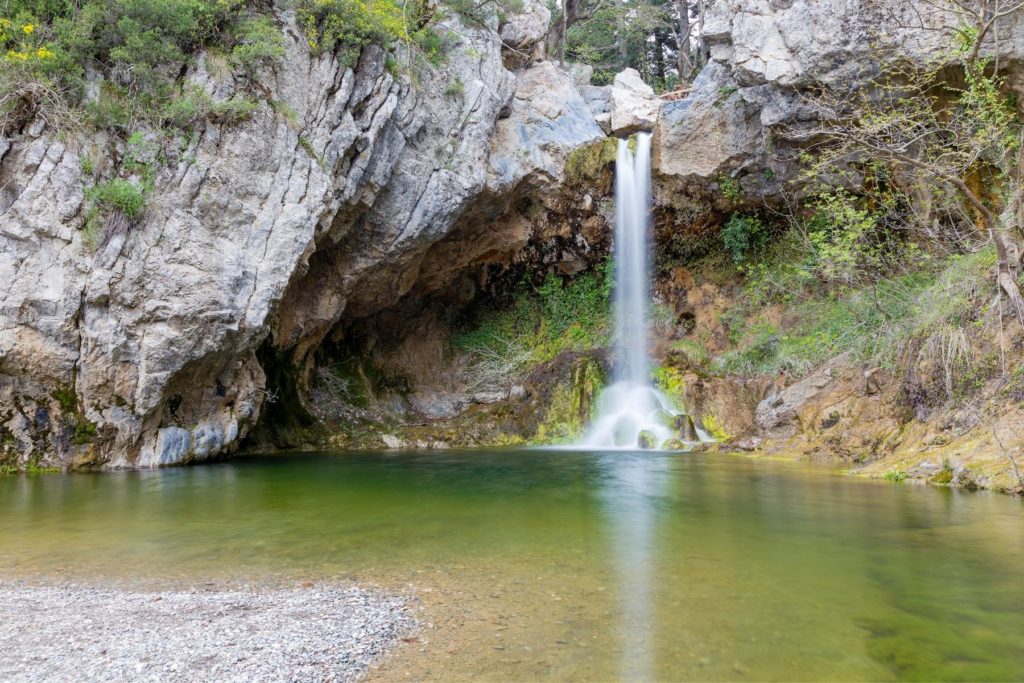
There is definitely a niche for waterfall tourism, and those who are part of it also find reasons for satisfaction on the island of Evia, where you should visit the Drimona waterfall, located in the north, about 4 kilometers from St David’s Monastery. The waterfall is situated at the height of 620 meters in the middle of a thick oak forest. Nearby is a ranger’s ‘office’, a wooden kiosk where you can learn more about local plants and fossils discovered in the area.
St David’s Monastery
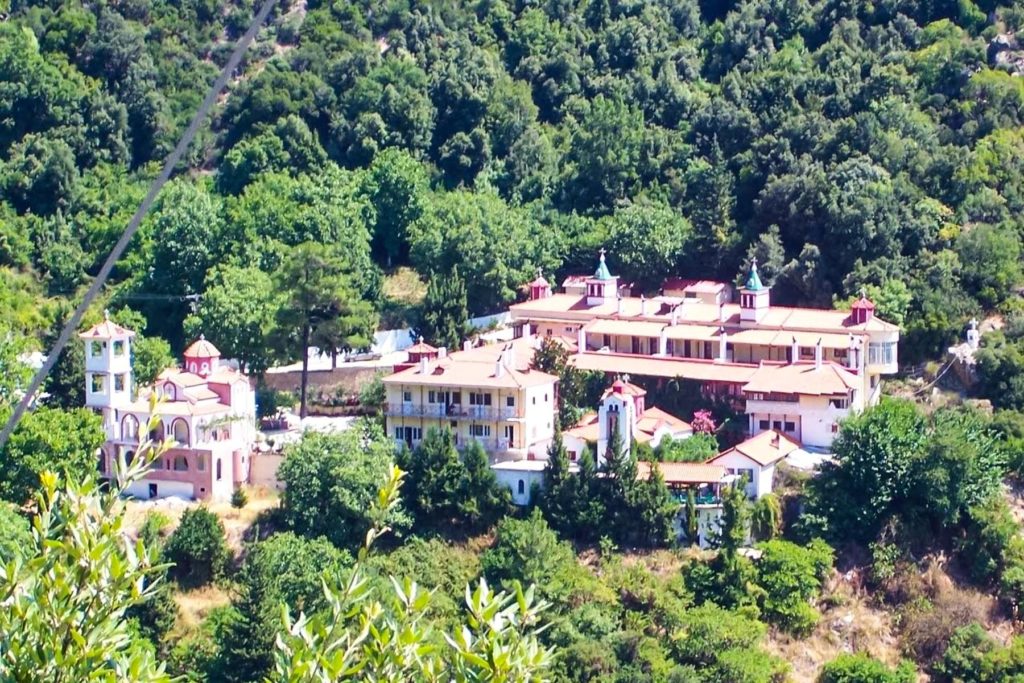
Near the village of Rovies in the north of the island, and just 4 km from Drimona waterfall, is the well-known monastery of St David. Founded in 1550, this monastery has a very rare hagiography and houses several historical relics that can be admired in the museum inside.
According to legend, the monastery came into being after David struck a stone with a stick and holy water began to gush from it. The original monastery building was burned down by the Ottomans during the 1820 Revolution to punish the monks for harboring insurgents but was rebuilt in 1877. The monks welcome visitors to the monastery with loukoumi, tea, and coffee.
Drakospita – Houses of Dragons
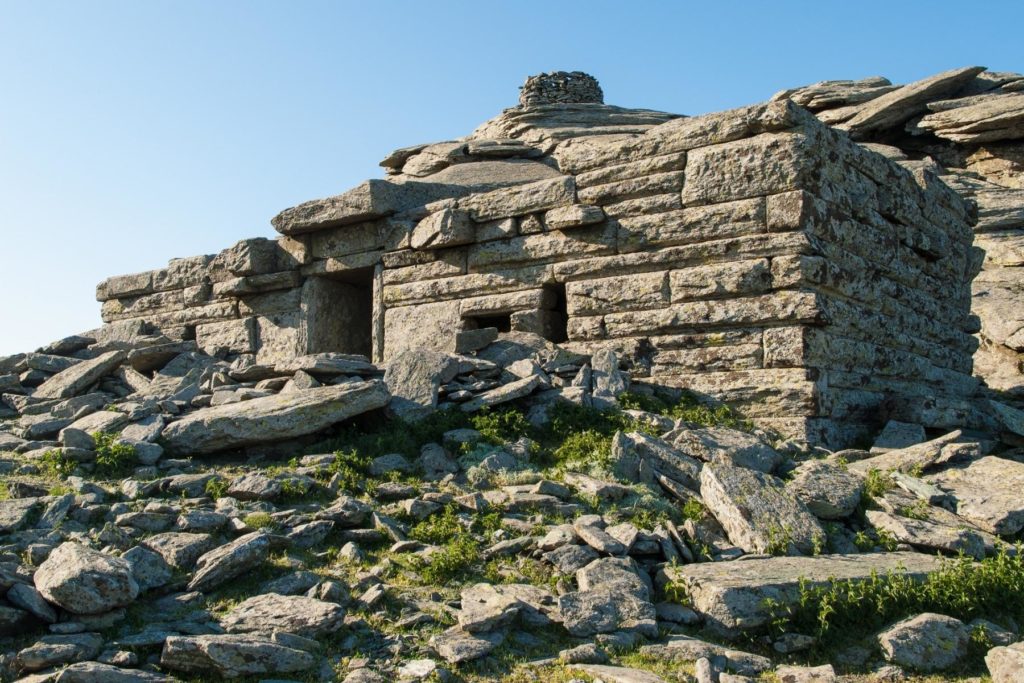
Those exploring the south of Evia must visit the Dragon Houses (Drakospita). Around Styra are 23 megalithic structures, perched on hills and mountains, made of huge pyramid-shaped limestone slabs, joined together without any mortar. At first glance, they don’t even look man-made, but the rectangular entrances, framed by massive slabs, reveal that these structures didn’t just appear out of thin air.
There are many theories about the existence of these ‘houses’, the most popular being that the site was built as a sanctuary dedicated to Zeus or the goddess Hera. The most visited structure is the one on Mount Ochi, at an altitude of 1400 meters, which is four meters long and two meters wide, weighing no less than 10 tonnes! The pottery found here dates back to the 8th century BC, attesting to the age of the Dragon Houses.
What’s the dragon connection? If the ancient Greeks attributed the making of huge structures to the Cyclops, their descendants attributed them to dragons, the creatures with supernatural powers in Greek folk tales. The Drakospita of Evia gave rise to a host of local legends, the main figure of which was the dragon that lived in the Dragon House on Mount Ochi, from where it terrorized the region.
Hiking up Mount Ochi is an unforgettable experience. It can be climbed from the village of Lyloi Karystou to the shelter at an altitude of 1100 meters, then follows a well-marked path that leads along steep slopes to the top of the mountain. Along the way, a stop at the chapel of the Prophet Elijah offers fabulous views of the surroundings. The area is included in the Natura 2000 program, for its natural beauty, very rare flora – isolated for thousands of years – and wildlife.
Dimosari Gorge
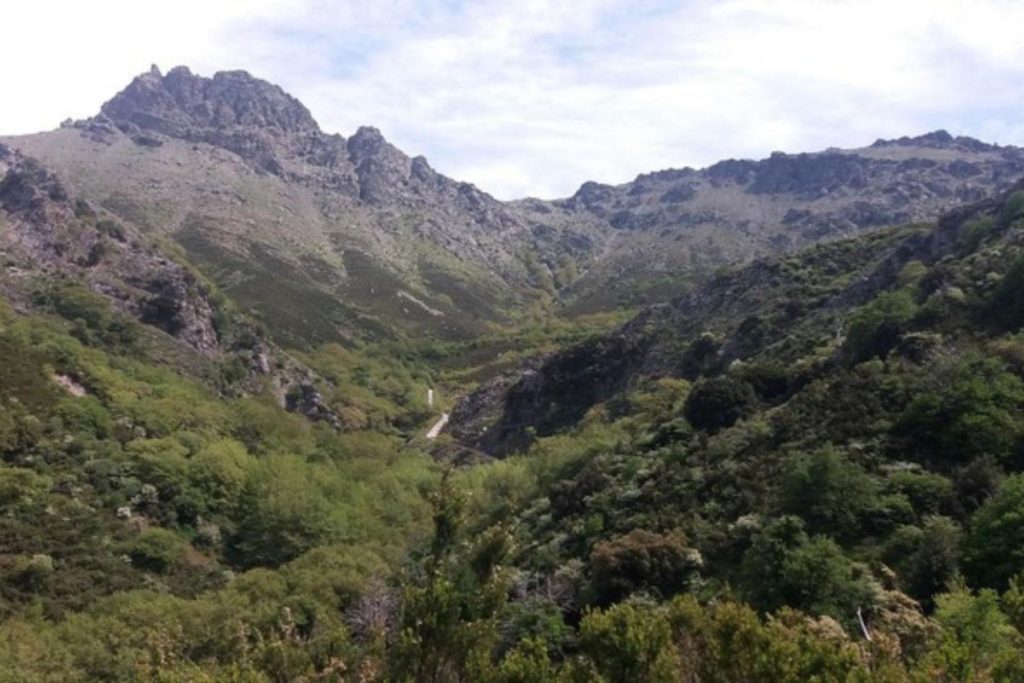
And if you’re a great lover of mountains and hiking, well, a hike in the Dimosari Gorge in the Ochi mountain range will give you full satisfaction. You can start your hike early in the morning from the top of the gorge, pass the village of Lenoseoi, see the impressive megalithic dragon houses mentioned above, and admire the floral richness of the area, ending at Kallianou beach, swimming in the deep blue sea. The trail is 10 kilometers long, and the views along the way are unforgettable.
Lichadonisia Islands

One of the wonderful excursions we took in Evia was to the Lichadonosia Islands, an archipelago nicknamed the “Seychelles of Greece”, a small paradise tucked away on the north-western tip of the island. Lichadonisia is the result of a volcanic eruption that took place five millennia ago.
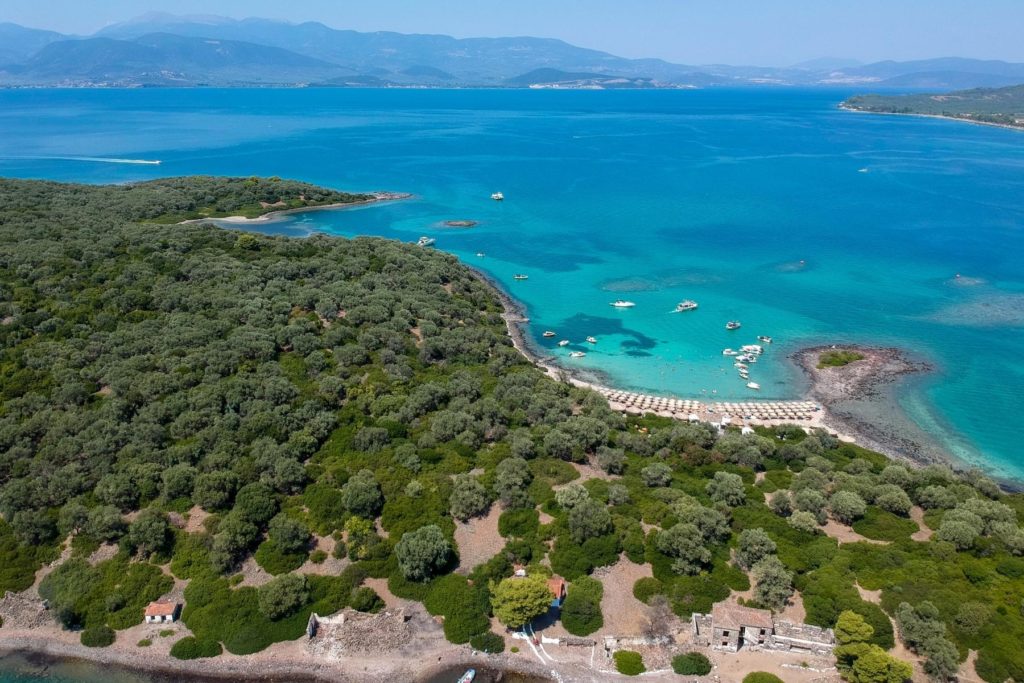
Excursions to Lichadonisia can be bought from the port of Agios Georgios, with the speedboat distance to them taking about 15 minutes. The islands are uninhabited, but there are developed beaches on Strogili and Manolia, where you can find food and drink for when you get hungry after lying on the beach and swimming in the turquoise waters. Diving enthusiasts should be aware that ancient wrecks surround the islands.
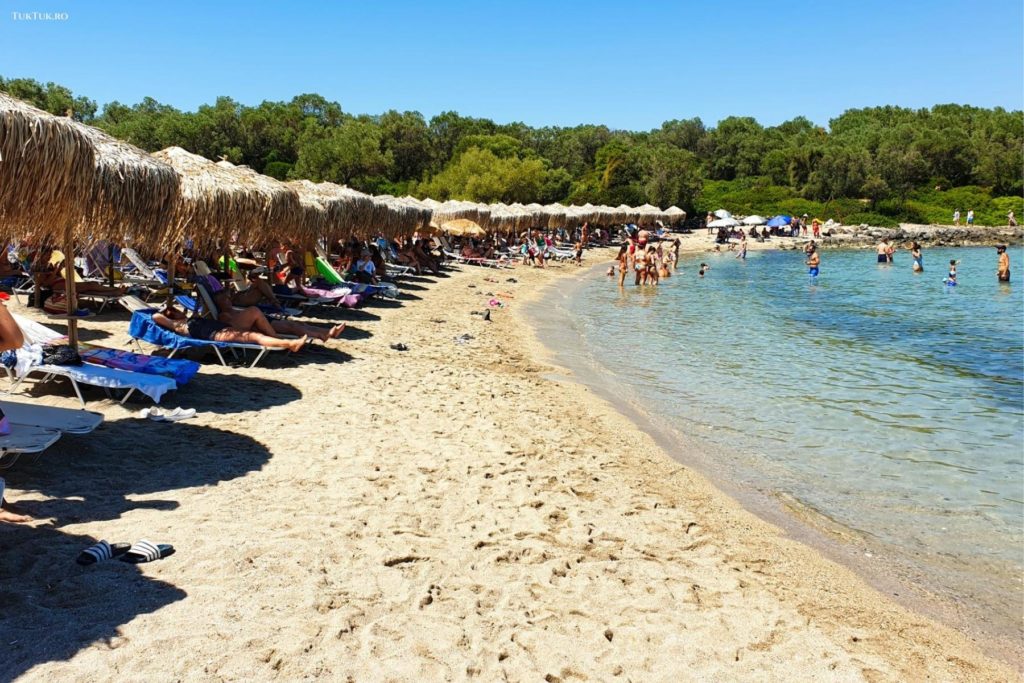
Bear in mind, however, that in high season, trips to the Lichadonisia Islands are very popular, so the boats are full of tourists, and the destination beaches are extremely crowded, which could become disruptive for those looking to relax in a peaceful setting.
Chalkida
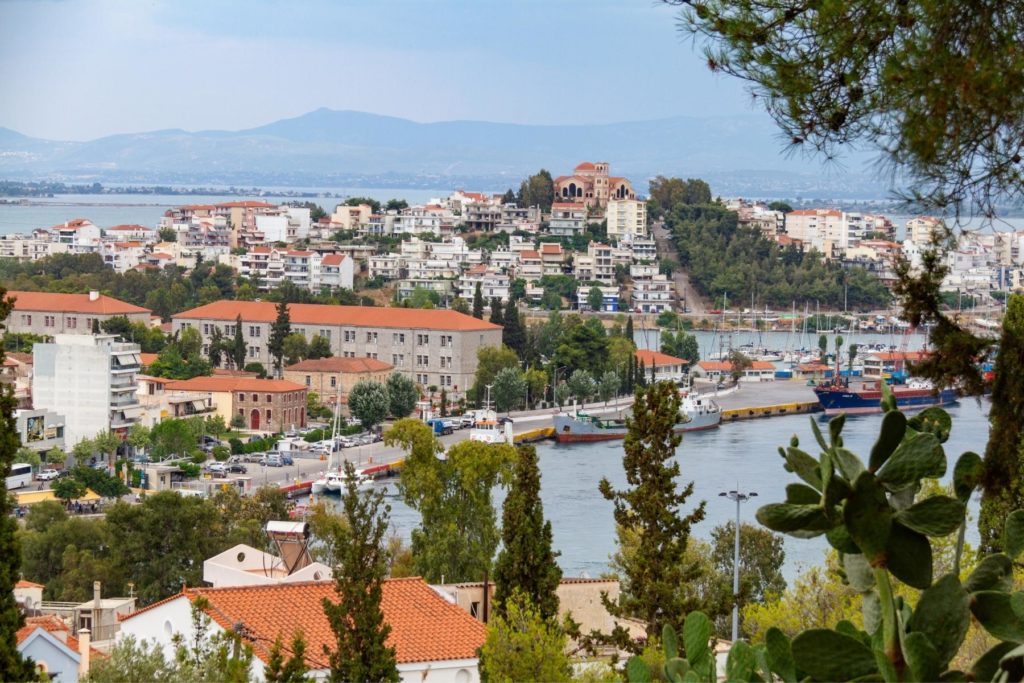
The capital city of Chalkida is probably not seen as an option for accommodation during a holiday in Evia, but it’s definitely worth a visit, perhaps even on the crossing to/from the mainland, as it’s practically the gateway to Evia for those crossing the bridge connecting to the Greek mainland.
In Chalkida, you can stroll along the seafront lined with tavernas with fresh fish and seafood, visit Kokkino Spiti (the Red House, built in 1884), the Statue House, the Archaeological Museum, and the Mayor’s Hall (with beautiful Baroque architecture).
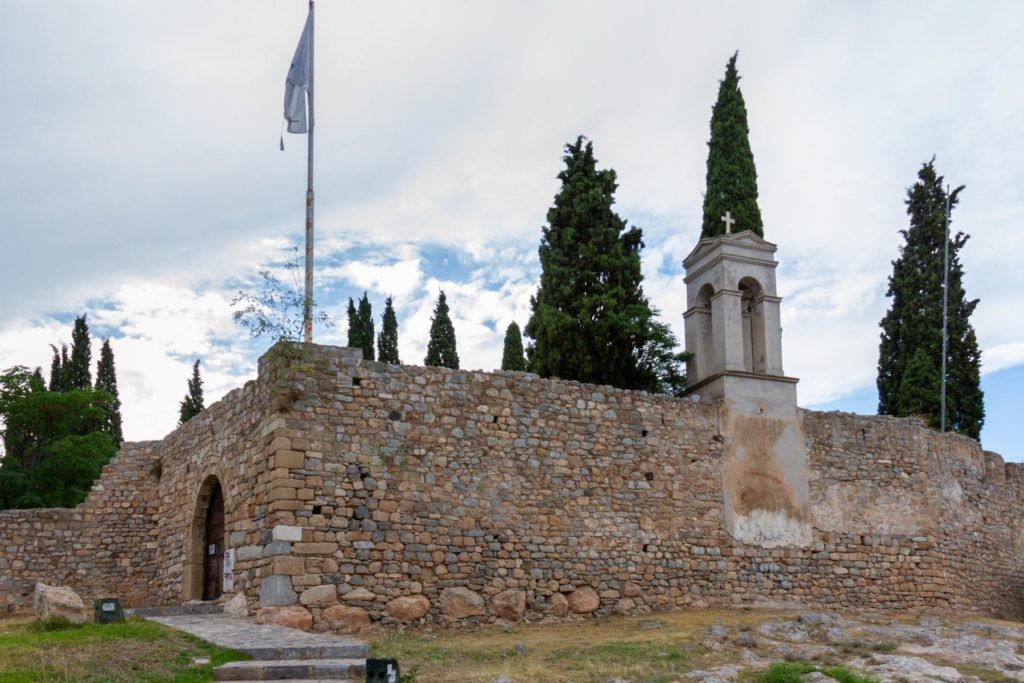
Just across the bridge from Chalkida (geographically, it is not on the island but can be included as one of Evia’s sights) is Karababa Castle, an Ottoman castle built in the 17th century to protect the capital against Venetian attacks; the interesting part being that it was designed by a Venetian himself and eventually fell to the Venetians in 1688. Karababa Castle sits on top of a hill from where you have beautiful panoramic views of the strait and Chalkida.
Kafireas / Cavo d’Oro
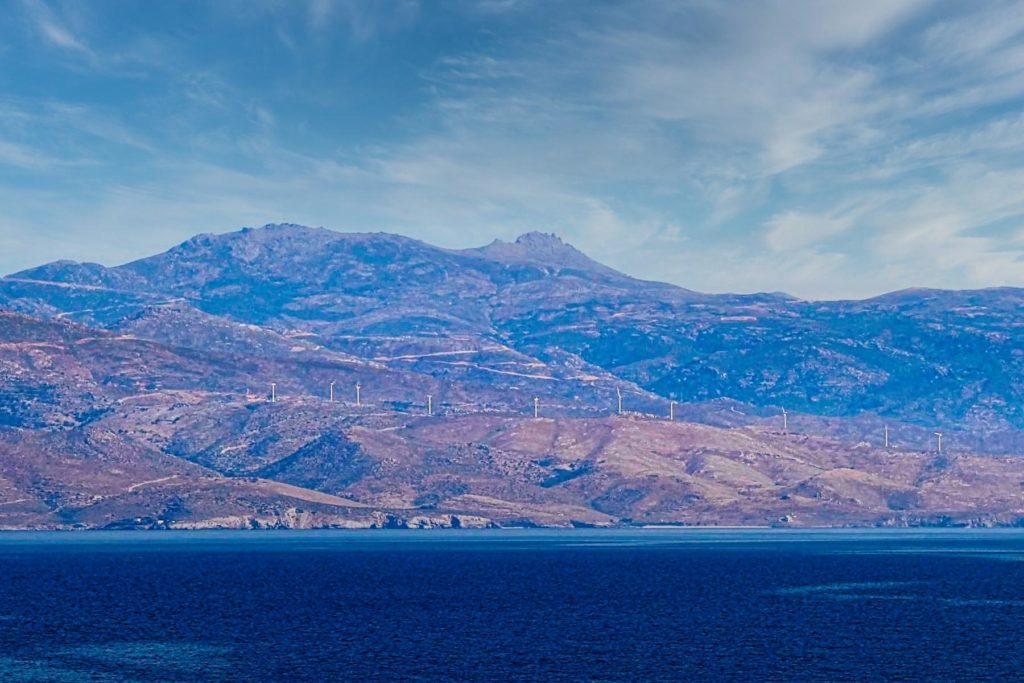
The legendary Cape Kafireas of Evia, also known as Cavo D’Oro, is a point located at the southeastern tip of Evia, 60 km from the town of Karystos. The slopes of Mount Ochi slope down to the sea, forming, together with the nearby island of Andros, the Kafireas Strait. Since ancient times, this passage has been one of the most dangerous sailing areas in the entire Aegean, a wild headland battered by the winds of the Aegean Sea. Treacherous currents, underwater rocks, swirling eddies – a place where shipwrecks were once the order of the day. Gold coins from Byzantine shipwrecks are said to still wash up on nearby shores – hence the name… d’Oro.
Church of St John the Russian
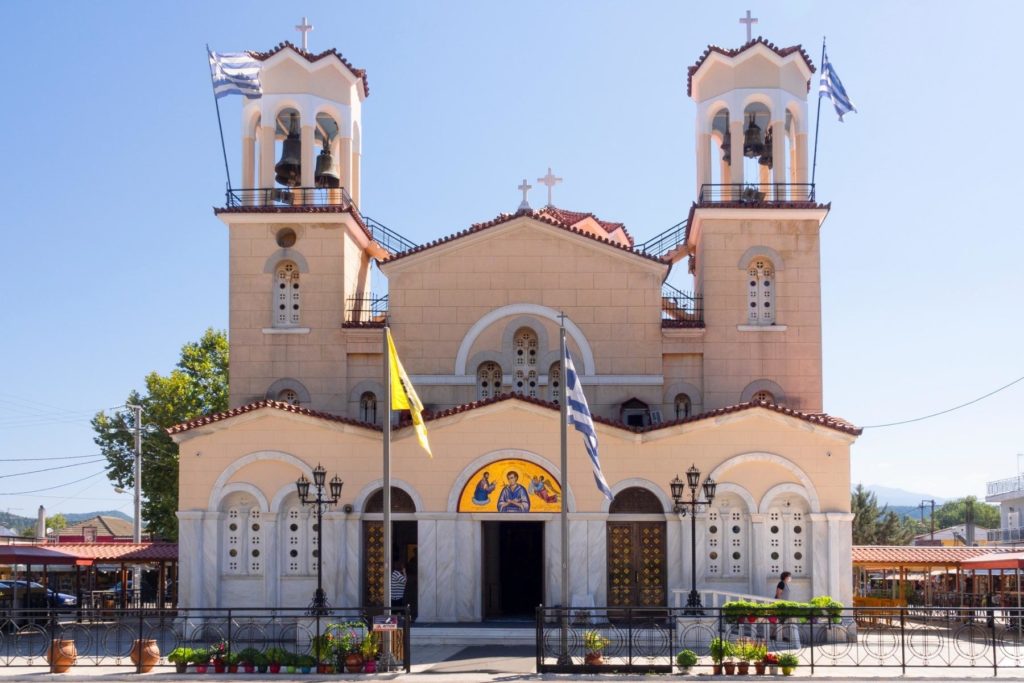
Located in the area of Prokopi and visited by thousands of believers every year, the Church of St John the Russian is one of the most popular places of worship on the island of Evia. Its construction began in 1930 and was not completed until 19 years later, in 1959. Inside are the earthly remains of this saint, who died in 1730 and was canonized in 1962 by the Russian Church.
John the Russian was born in Ukraine in 1690 and was captured and sold into slavery during the Russo-Turkish War of 1710-1711. He became known for his refusal to convert to Islam, and his relics were brought to Evia by immigrants from Anatolia who were forced to move to Evia following the Greek-Turkish war in the 1920s. There is a steady stream of pilgrims who come to the church of St John the Russian in Prokopi because the saint is believed to help those suffering from chronic illnesses. The saint is celebrated annually on 27 May.
Limni
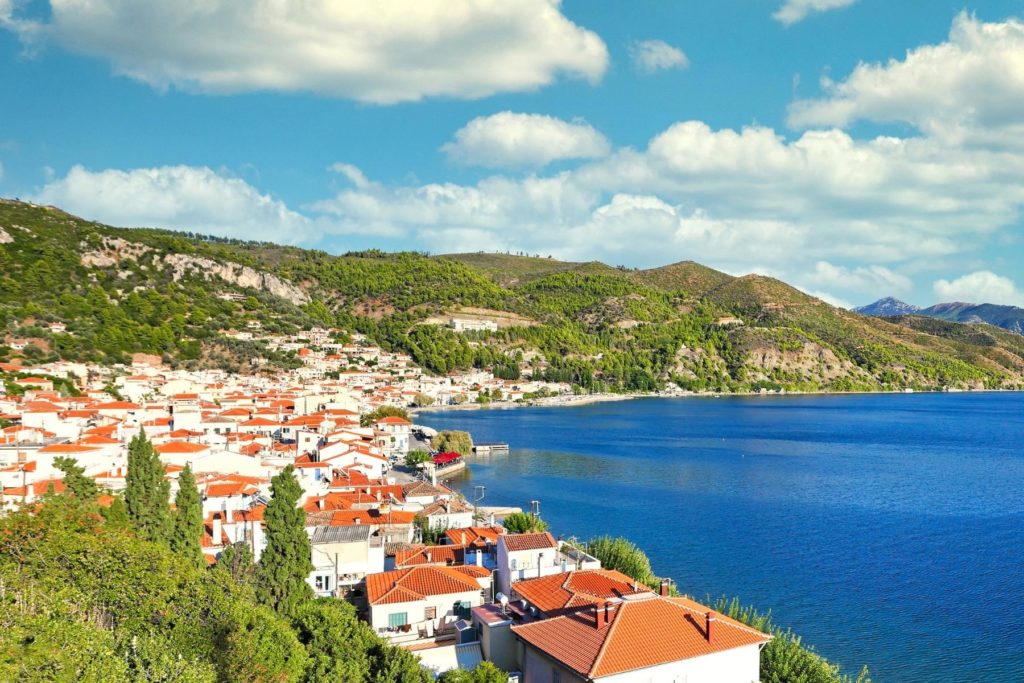
Limni is one of the most picturesque towns in northern Evia, and its beauty lies mainly in the fact that it is built on the seashore but is watched over by the nearby mountain. Limni stretches around a natural harbor and has a special personality, with narrow streets, old traditional houses, and small picturesque churches.
There is a historical and folklore museum in the town, and sights include the Church of the Assumption of the Virgin Mary, the ruins of an early Christian basilica which was built on the remains of a Roman bath, the hermitage of St Christodoulos and the municipal archive, which contains important documents for the island of Evia. Limni also has a beautiful cliff, where you can walk along and from where, in the evening, you can take beautiful photos of the sunset.
Eretria
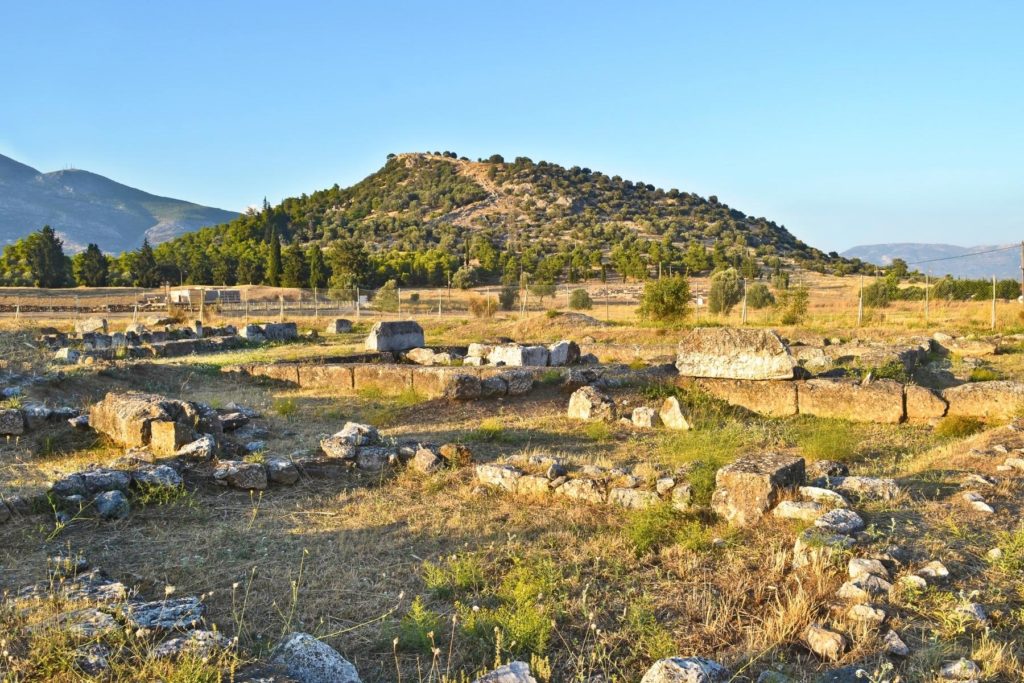
Built on the site of the glorious ancient city-state of yesteryear, Eretria was a dominant maritime, commercial, and agricultural power that established colonies in the Aegean region and southern Italy. The Persians and Romans twice destroyed it and later abandoned it until 1827, when refugees from the island of Psara settled here. Arguably, after Chalkida, Eretria is the second ‘gateway’ to the island and one of the must-see places for those staying in southern Evvia.
The rich history is reflected in the fact that Eretria is home to the most important archaeological museum in Evia, which is located right next to the archaeological site. Artifacts found at the site are on display at both the Louvre Museum and the National Museum of Archaeology in Athens. Still, some pieces have remained at Eretria, the museum’s pride and joy being the terracotta centaur from Lefkandi, dating from the 10th century BC.
Another must-see in Eretria is the amphitheater which was built in the 5th century BC and is one of the oldest amphitheaters in Greece. The temples of Apollo, Dionysus, Dimitra, and Isida, the “mosaic house” built in 370 BC with its mosaic floors, the Macedonian tomb, and other relics and ruins join the sights of Eretria.
Karysthos
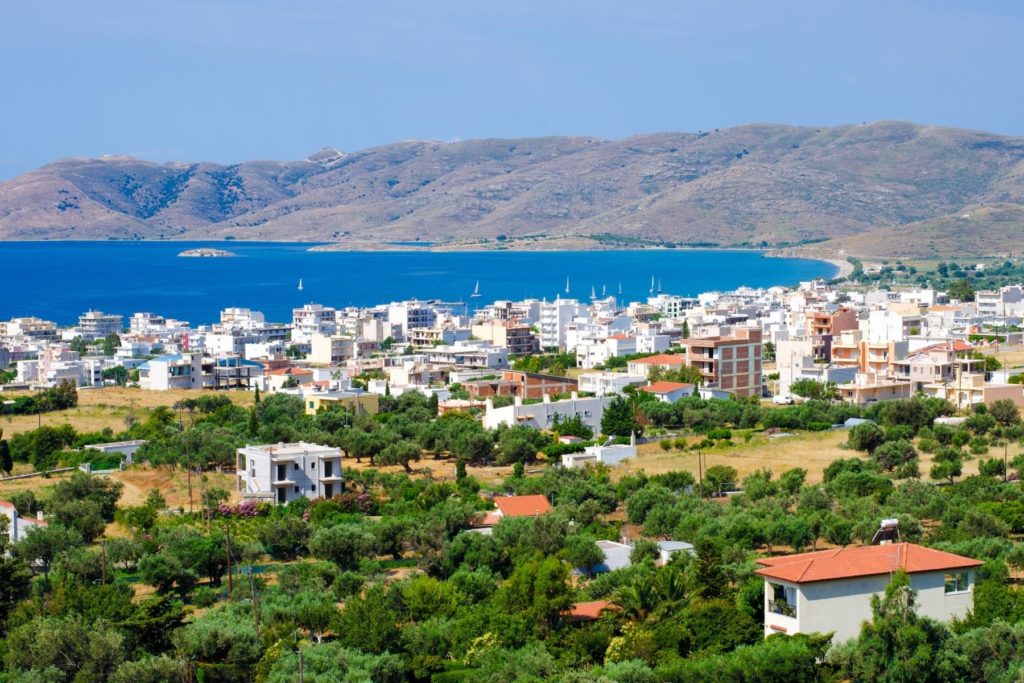
Also in the south of the island, but this time in the extreme south, Karystos greets its visitors with a vibrant atmosphere, with the restaurants, bars and cafes on the waterfront packed with people in the peak months. Karystos is very popular with Greeks coming from Athens or the mainland, so here you can enjoy spending hours (or days) with authentic Greek spirit without being “disturbed” too much by the external tourist madness.
In Karystos, you can see the restored Venetian tower on the beach on the eastern side of the town (13th century), the ruins of a Venetian castle (Castello Rosso – 13th-15th century), the town hall with its imposing facade, St. Nicholas Cathedral, the monastery of Aghia Mavra and other nearby attractions of southern Evvia, including the Houses of the Dragons and Cavo d’Oro.
Marmari
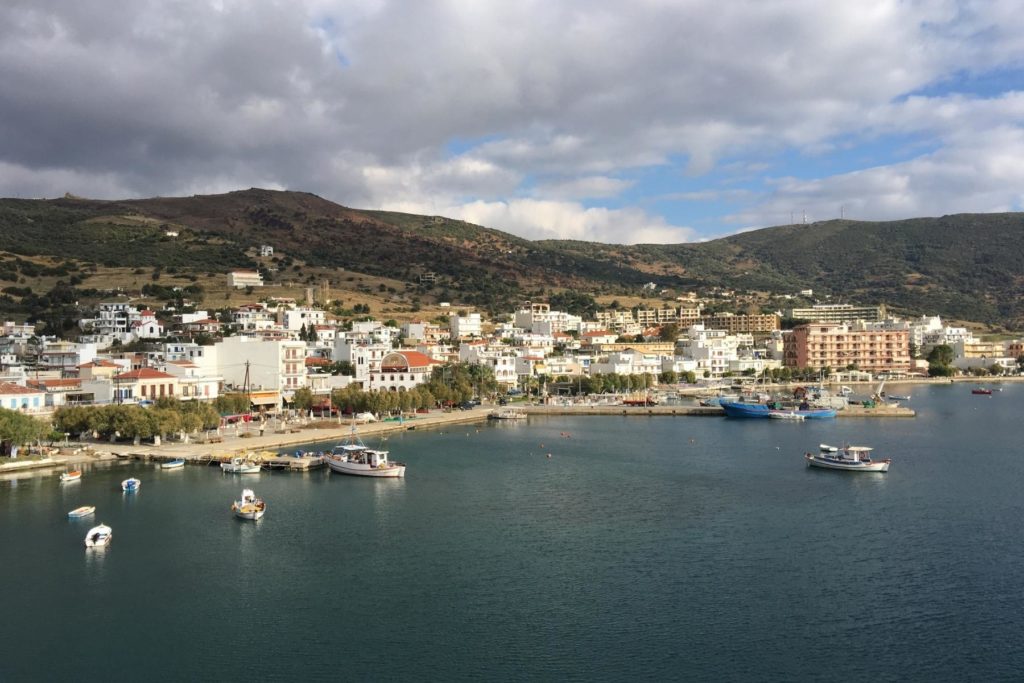
Last but not least, those heading south of Evia can also visit the tiny village of Marmari, a village built in the shape of an amphitheater in a beautiful bay. One of the main attractions near Marmari is Golden Sand Beach, opposite the island of Petallon, a favorite destination for windsurfers and kitesurfers. The harbor of Marmari has been known since ancient times when it was used to transport the rocks that the area has been exporting since that time. From Marmari, you can reach the mainland by ferry to Rafina.
Best beaches in Evia
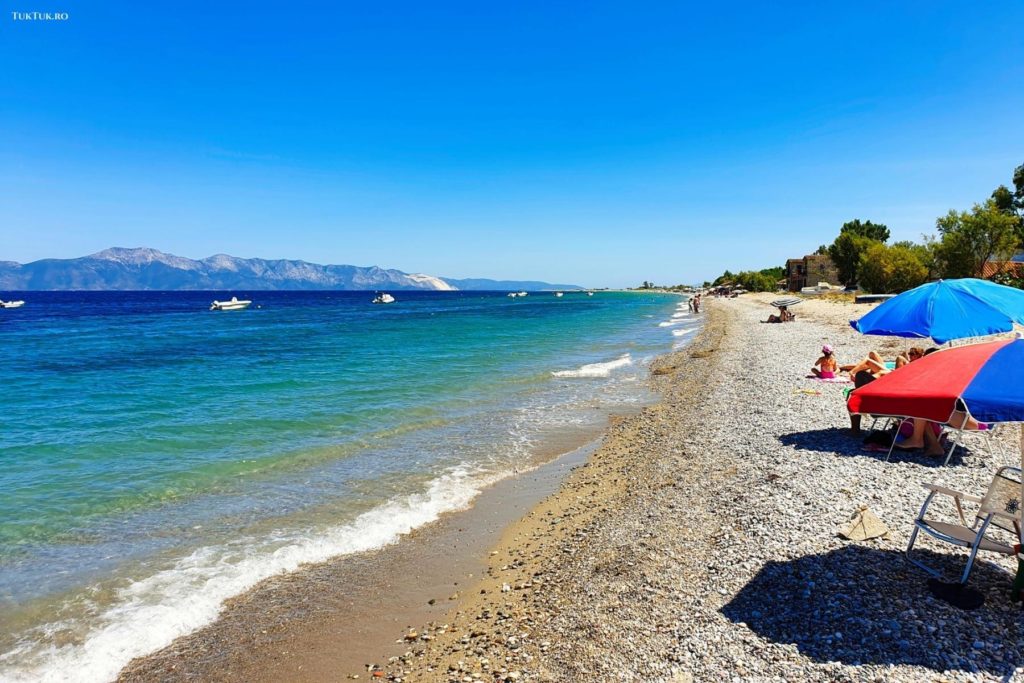
During my holiday in Evia, I visited a few beaches, but the island is too big to “test” them all. The distances between north and south, in fact between north and center or center and south, are very long, so you can’t run from one beach to another every day and try to relax in between. That’s why the idea is, depending on where you’re staying, trying to go to the best beaches in that area.
In general, Evia’s beaches are pebble beaches – don’t expect to come across the fine sandy beaches of other islands. However, some are mixed (pebbles and sand), and their charm comes from their natural location and the fact that the seawater is generally calm and warm. Below are 10 of the best beaches in Evia, and suggestions for spending hours lying in the sun in a fairytale setting:
Agia Anna Beach
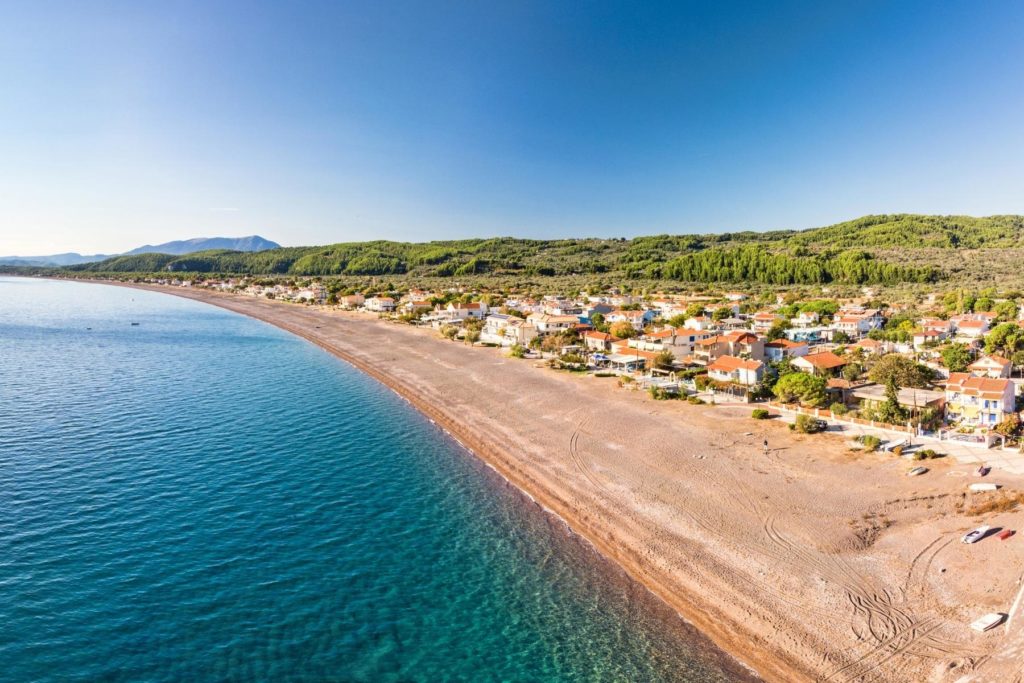
This is one of the most beautiful beaches on the island of Evia and is sought after by tourists from all walks of life, from married couples with young children to solo travelers and middle-aged holidaymakers. Agia Anna beach is a pebbly beach bathed by a warm, shallow, and very clear sea, free of stones and algae. It has various facilities – umbrellas, sun loungers, a café, water sports facilities, shops, etc. Easy to reach, Agia Anna is located on the north side, on the east coast of the island.
Rovies Beach
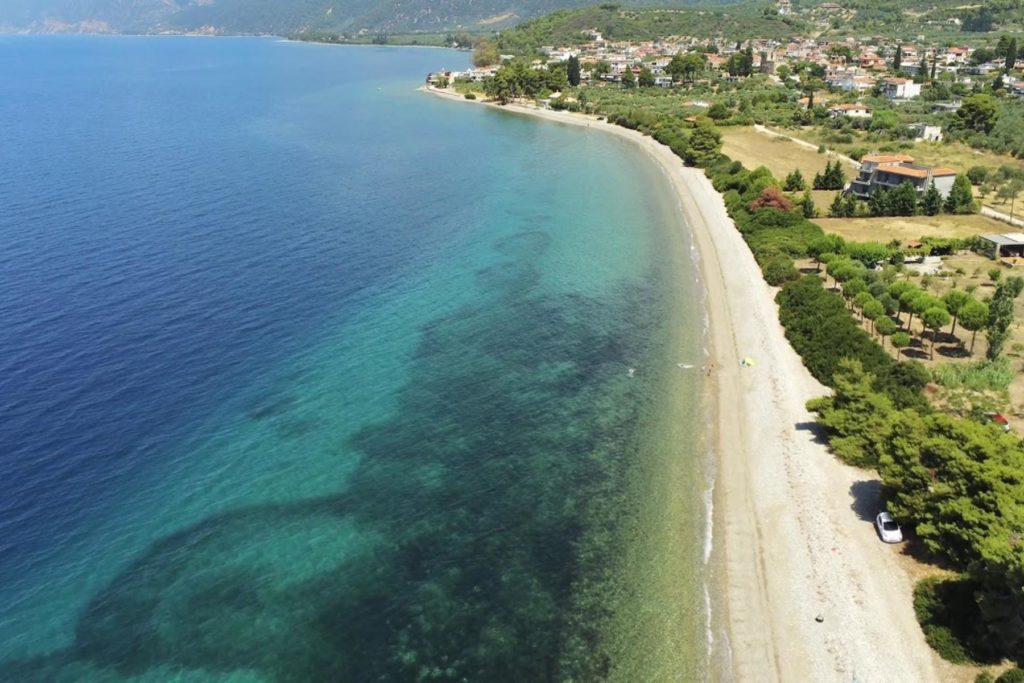
Located in the northeast of Evia, near the village of the same name, Rovies Beach is a wide strip of sand and pebbles, bordered by pine trees and the blue waters of Vorios Evoikos Bay. In the central part of the beach you can rent umbrellas and sun loungers, and there are bars and cafes. All in all, Rovies is one of the most popular beaches in northern Evvia, benefiting from a smooth entrance to the water that appeals to families with children. However, the sea bed is rocky, so special shoes are recommended.
Chiliadou Beach
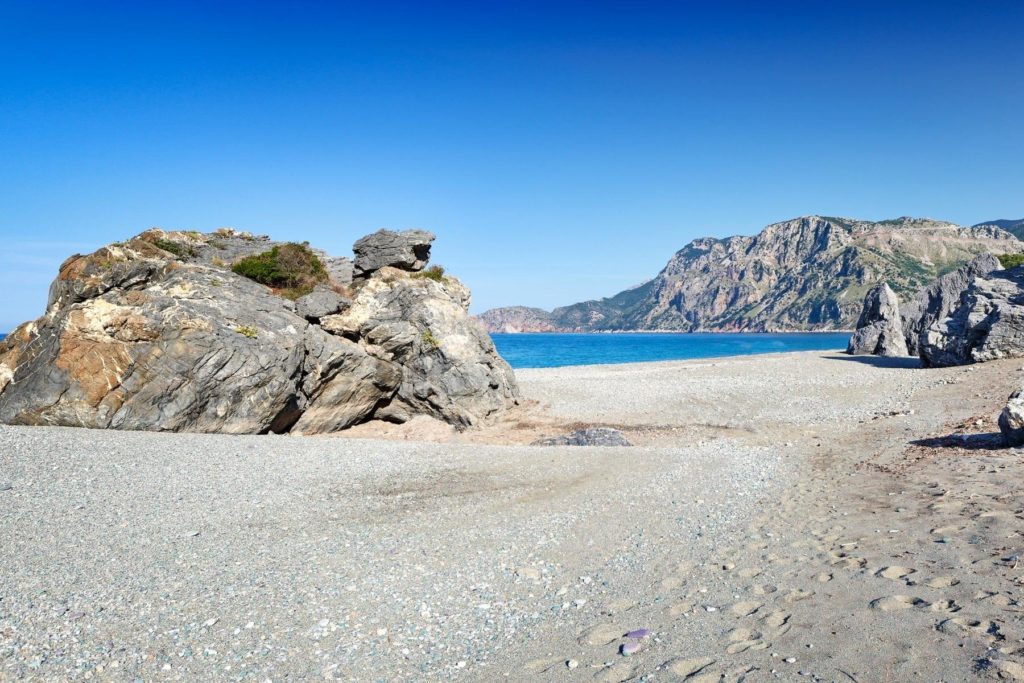
Many consider Chiliadou Beach to be the most beautiful beach in Evia, and for a good reason, even though it is a wild beach in the central-eastern part of the island, which is quite difficult to reach by car on a narrow road. The atmosphere at Chiliadou Beach is extremely relaxing, and the scenery is stunning – a place where steep, sooty cliffs connect with white sand and turquoise sea. A wide strip of sand and gravel, the entrance to the water is gentle, but the seabed suddenly becomes deep, which is not very pleasant for children.
Chiliadou beach is not equipped with sun loungers and umbrellas and is especially popular with couples in love who want privacy, surfers, and even nudists. Many come here and camp directly on the beach.
Thapsa Beach
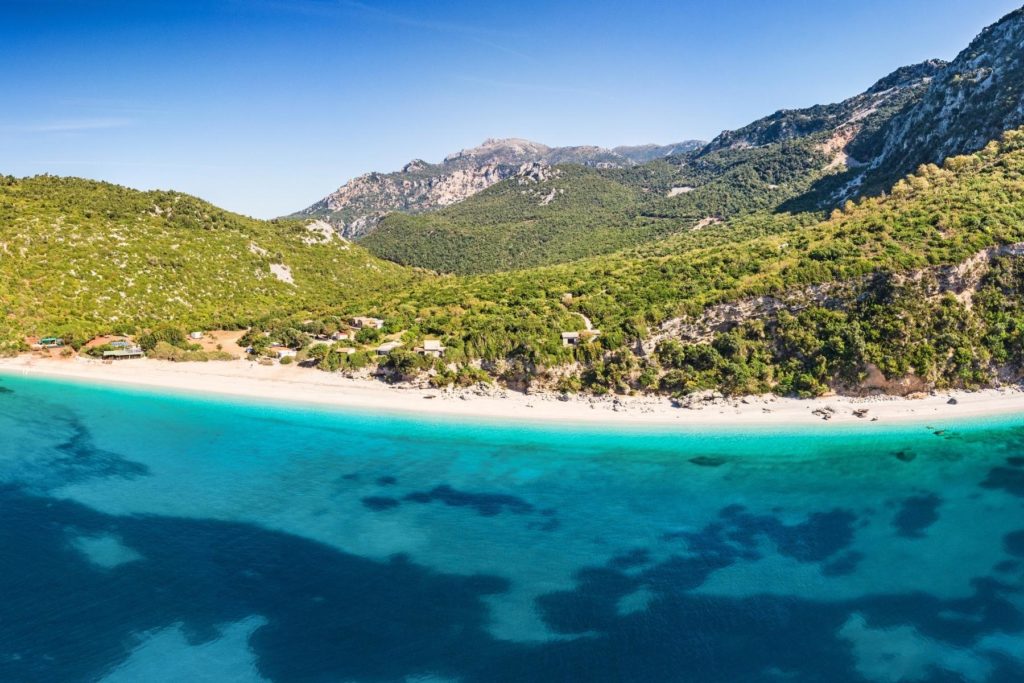
Probably the hardest beach to access in Evia (you need a 4×4 vehicle to cover the 10km of country road from the village of Koutorla), Thapsa Beach is a pristine, undeveloped but extremely charming beach in a white sand and pebble cove, a kind of tropical-looking ‘blue lagoon’. If you really want to spend the night here, camping on the beach is allowed, but don’t expect to find any amenities.
Pefki Beach
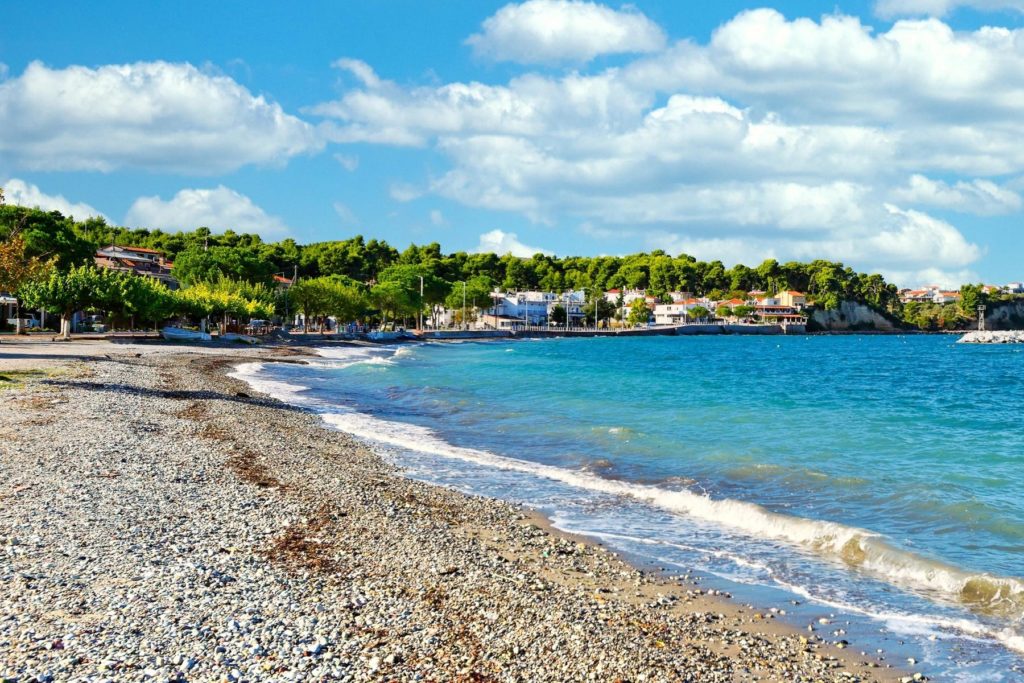
Pefki Beach is one of the longest beaches in northern Evia – it stretches for about 4.5 kilometers of coastline – and arguably the most popular among those who spend their stay in northern Evia. Pefki was, in fact, the beach I came to most often (besides Ilia beach, which was next to the hotel where I stayed) and even though I’m not necessarily a fan of pebble beaches, I liked it for the atmosphere, the turquoise hues of the sea, the clarity of the water and its facilities. There’s plenty of room on Pefki beach for everyone, plus tavernas, cafes, and hotels are everywhere.
Kalamos Beach
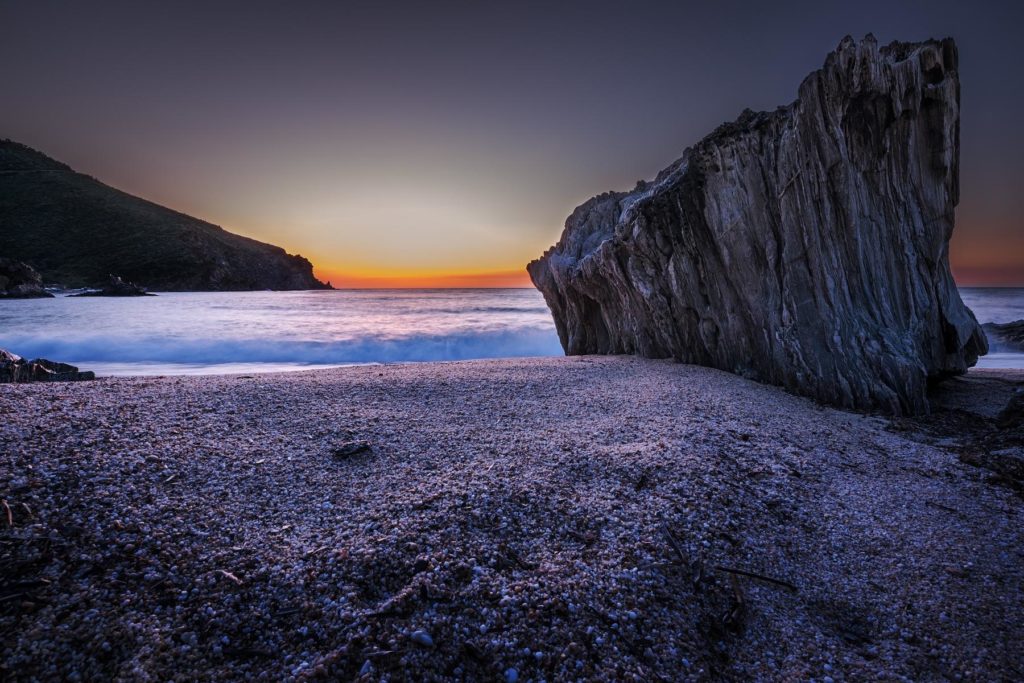
Located in the central part of the island, about 10 km from Avlonari, Kalamos Beach is known as one of the best beaches in Evia for families without children and for young people. In the middle is an impressive cliff that practically splits the beach in two. One part of Kalamos has a well-developed infrastructure (umbrellas, sun loungers, showers, tavernas, bars, and small hotels). At the same time, the other is attractive for its picturesque nature (majestic cliffs and pine trees) and the fact that it offers a degree of privacy. The whole of Kalamos beach is white sand, the color of the sea an azure blue. Winds can create high waves, and the water depth rises sharply, which is why Kalamos is not a beach for young children.
Agiocampos Beach
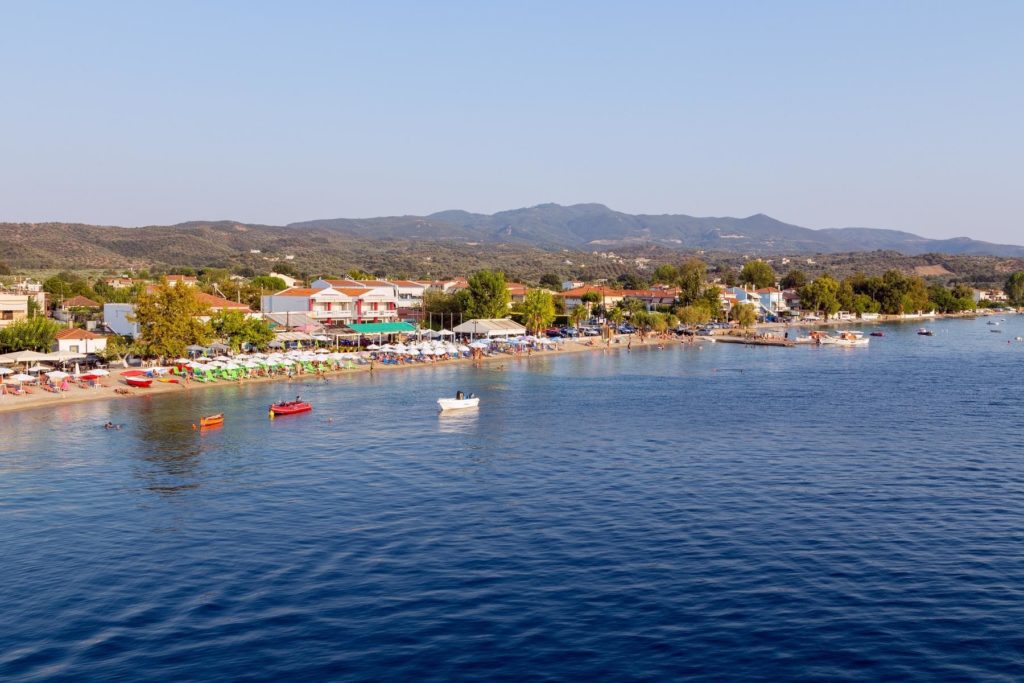
Agiocampos Beach has water so clear and blue that swimmers can easily see the wide variety of fish in the shallows. Tourists and locals alike are extremely fond of this beach which is generally considered one of the best in Evia. Agiocampos can be reached by car and is easy to spot if you are holidaying in the north of Evia.
Limnionas Beach
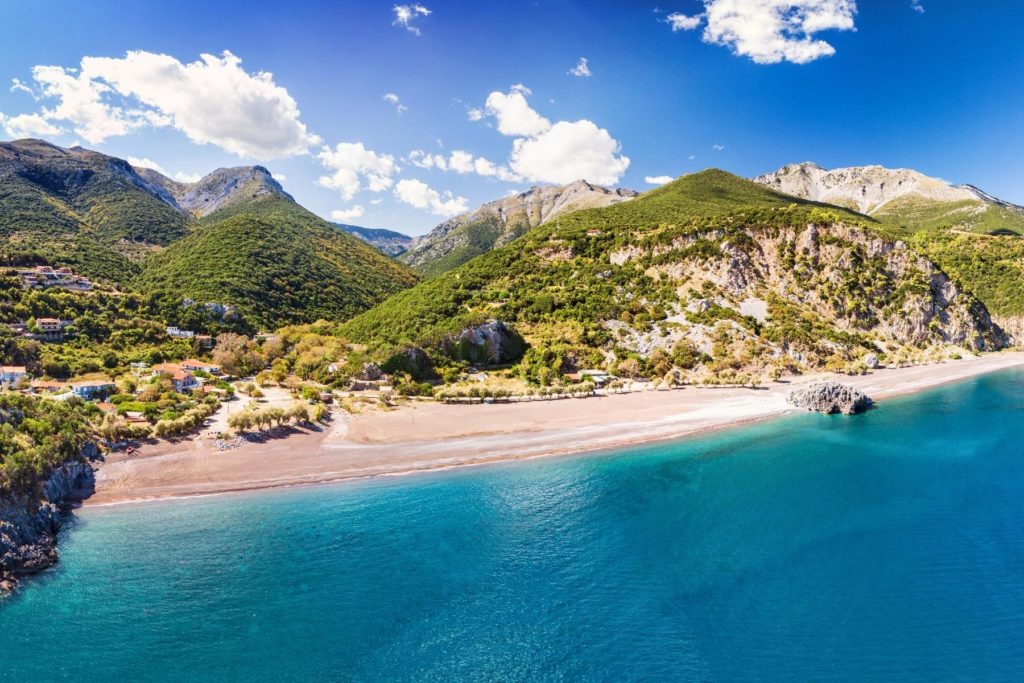
Limnionas is one of the locals’ favorite beaches, mainly because of the clean sea. Limnionas beach is located on the eastern side of Evia, very close to Psachna, and has sand mixed with pebbles. The sea water is turquoise, the entrance to the water is smooth, and the northern part of the beach has a spectacular cliff covered with vegetation that protects the coast from the winds. There are several bars, cafes, and tavernas on the beach, there is a car park and umbrellas, and sun loungers can be rented.
Gregolimano Beach
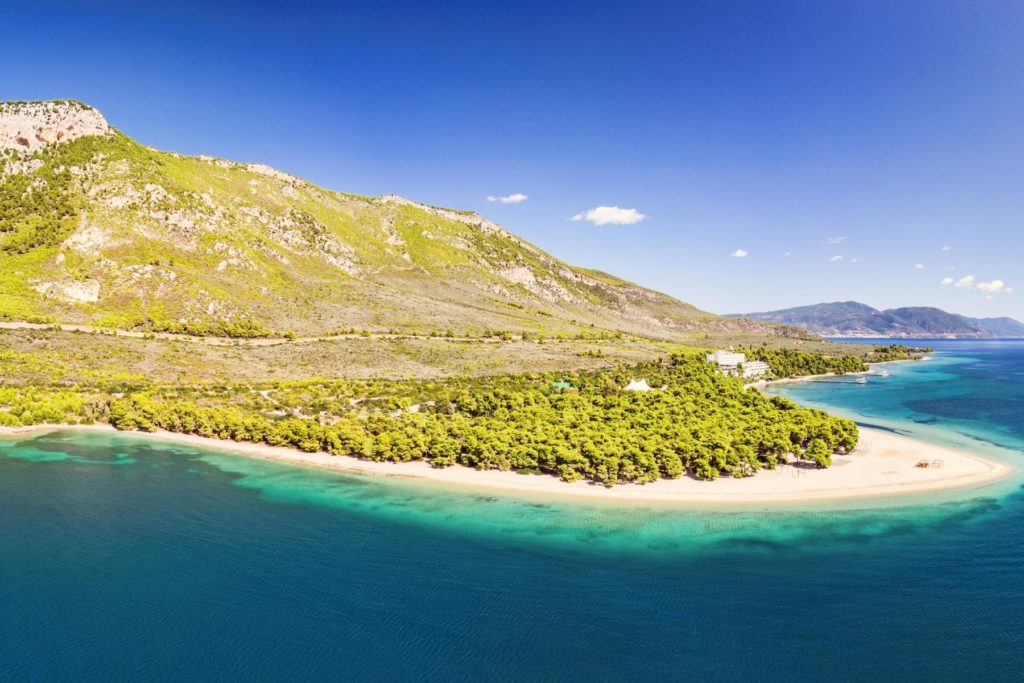
Located on the northern side of Evia and with its triangular shape, Gregolimano beach is a great choice for families with children, especially because of the fine sand and the facilities it offers, from umbrellas and sun loungers to water sports.
Evia’s Gastronomy
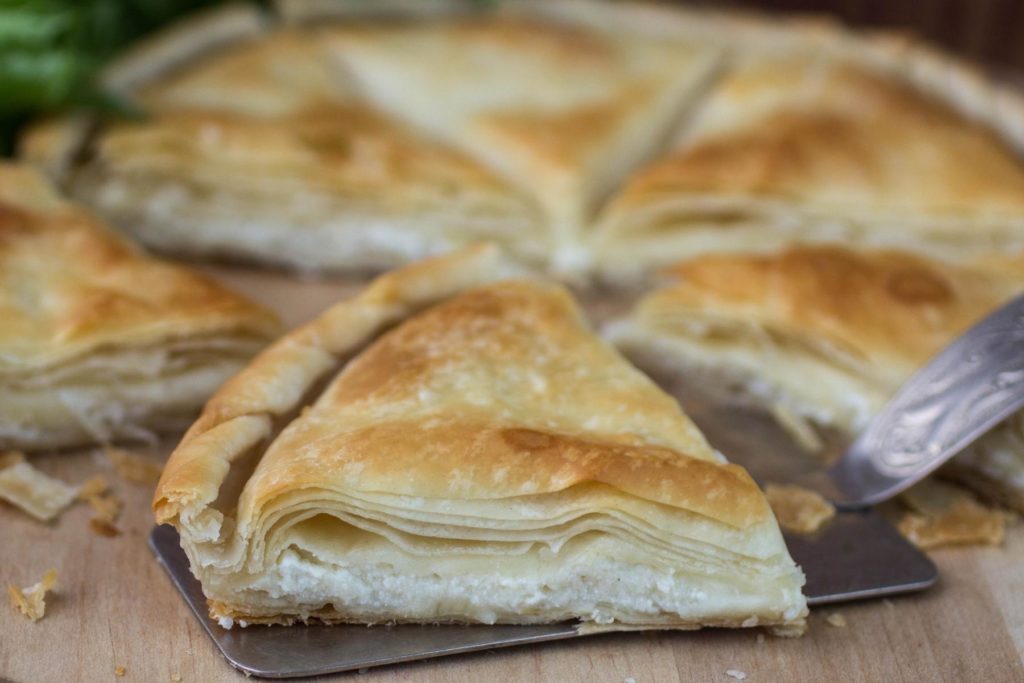
Like any Greek island, Evia has its gastronomy, which is rich and famous for its simplicity, diversity, strong flavors, and fresh ingredients. I’ve eaten at many tavernas in Evia – in some I’ve fallen, as elsewhere, into tourist traps, the dishes no more than conventional, soulless treats, but I’ve also found places where you lick your fingers at the end of a meal.
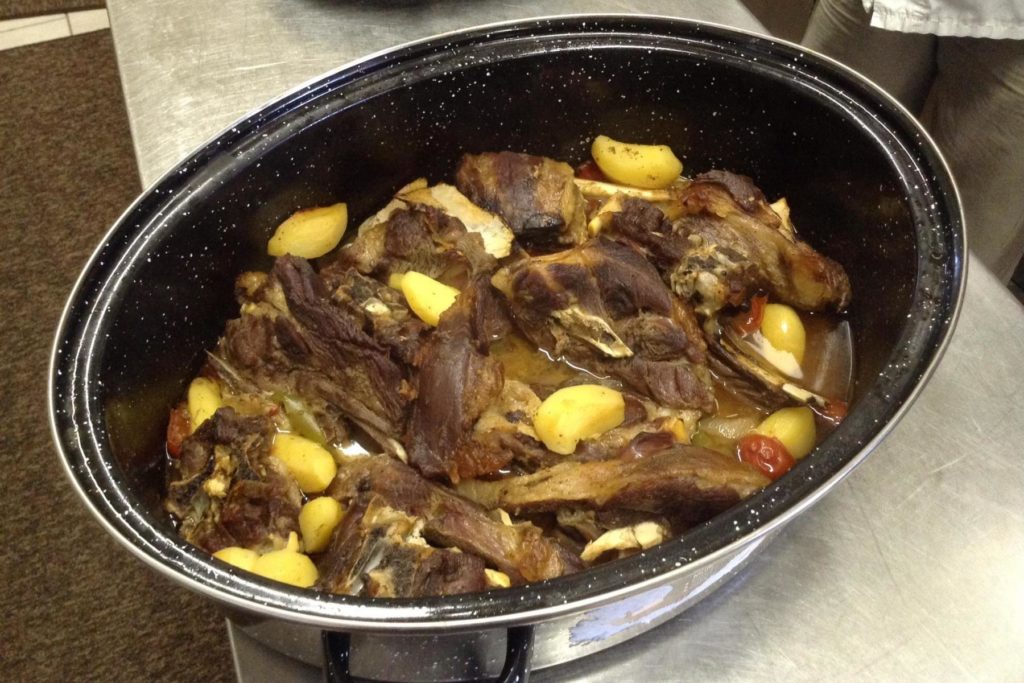
In Evia, meat is deliciously combined with vegetables, with recipes handed down from generation to generation. And what’s special about this island is that, being a favourite of Greeks (many Athenians spend their holidays and weekends here), the food is somewhat adapted to their tastes. So look out for restaurants and tavernas serving rural-style lamb dishes – kontosouvli, exochiko – or local sausages, gardoumba, kokoretsi, bekri meze, astakomakaronada, psaromeze, kourkoubines or goglies, lamb with pasta, fried prawns, octopus in wine sauce, spaghetti with seafood, pita with wild greens, tiropitaria, local bream, and local wine. Add the local sweets such as delicious soutzouki, Kimi-style baclava, fresh or dried and aromatic steamed figs, almonds, and honey.
Those visiting (or staying) in southern Evia should look out for these three regional signature dishes: tiropitari, kourkoumpinia and lamb vouloto. Tiropitari is a stretched dough filled with soft, white, touloumotiri cheese made from goat’s and sheep’s milk – basically a cheese pie. Kourkoumpinia are typical Evia island sweets (elsewhere, you’ll find them as gogkles or tzolia), and lamb vouloto is made with garlic and lamb meat seasoned with salt and pepper, cooked over low heat in a closed oven for several hours until tender and sweet.

All in all, Evia is an exciting island where you’ll spend a holiday with everything you could wish for, from the beach to the sights and delicious cuisine. It’s not necessarily the most beautiful Greek island, nor the most picturesque or popular, but it’s definitely one to visit and understand, as it has a lot to offer across its expanse.
Pin it!
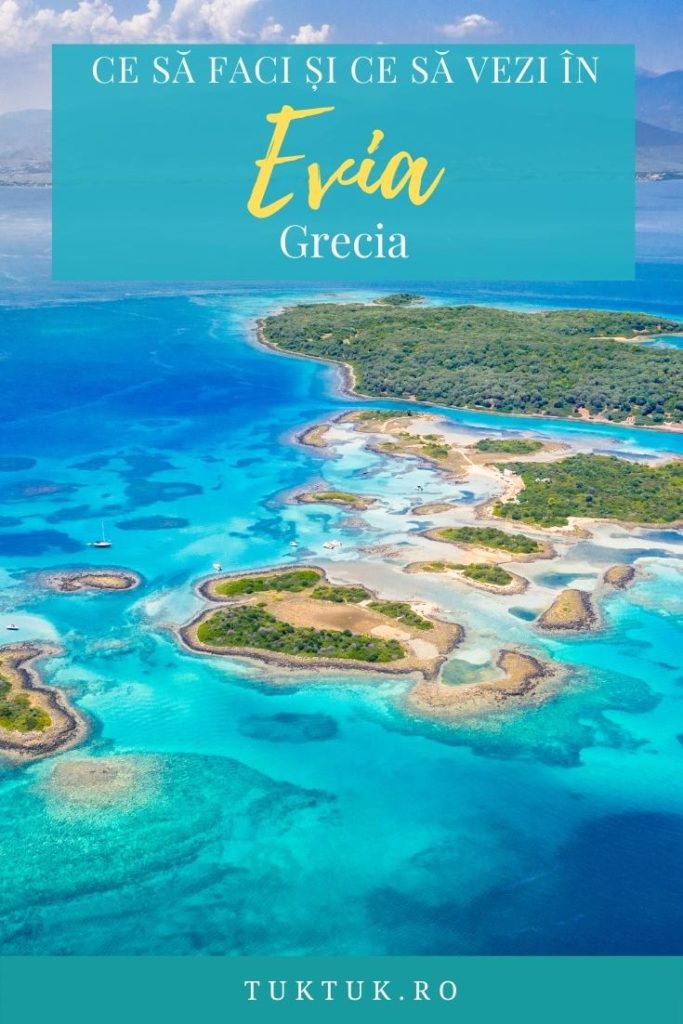
You may also like: Places in Greece to combine a mountain and a seaside holiday

